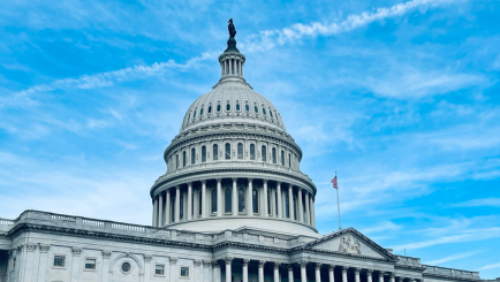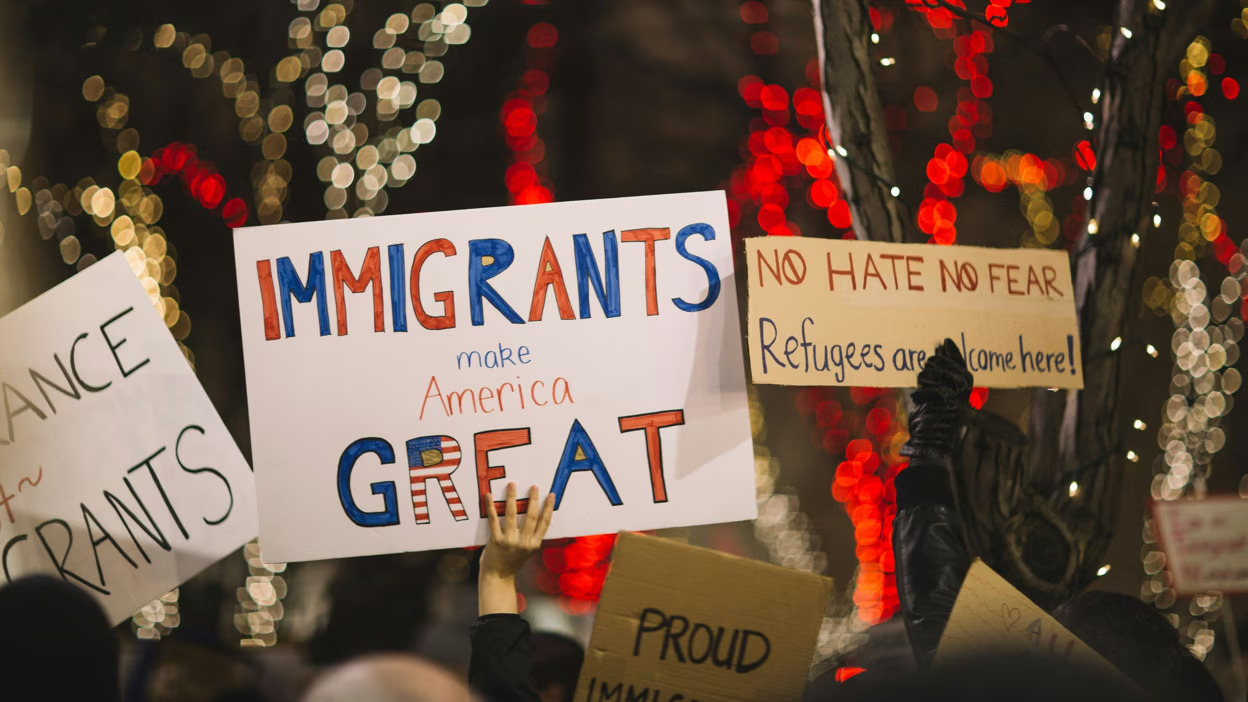When local communities receive new immigrants who have been released at the border by the Department of Homeland Security (DHS), they often provide necessary support to ensure that people have their immediate and short-term emergency needs (such as food and temporary shelter) met. Over the last decade, as large numbers of asylum seekers began arriving at the border and were released by DHS to await court hearings inside the country, local communities have stepped up to ensure that migrants are not forced to sleep on the streets after arriving.
Since 2019, Congress has provided a limited pool of funding that local and state governments, as well as nonprofits, can apply for to reimburse some costs of emergency sheltering needs. This funding is currently provided through the Shelter and Services Program, which is administered by the Federal Emergency Management Authority (FEMA). The Shelter and Services Program is one of many such programs administered by FEMA, which carries out numerous functions beyond its core mission of disaster relief. Throughout its existence, the program has received bipartisan support from members of Congress and from local leaders who have called on the federal government to provide more financial assistance to communities both at the border and around the country that receive new immigrants.
What is the Shelter and Services Program?
At the border, the Shelter and Services Program ensures that communities can stand up short-term shelters for migrants released by Border Patrol, helping limit street releases. Shelters and local governments work directly with Border Patrol and U.S. Immigration and Customs Enforcement (ICE) in coordinating releases in certain communities. Many shelters at the border are intended to be transitory, and some limit the time a migrant can stay to 72 hours. At these shelters, some of which are run by nonprofits and some which are run by local governments, volunteers and staff help migrants arrange transportation, provide beds to sleep, conduct medical evaluations, and prepare meals.
Reimbursement through the Shelter and Services Program helps these local governments and shelter operators manage some of the costs necessary to keep these facilities running. These costs generally consist of the following budget items: providing food, beds for overnight stays, short-distance transportation (such as when a migrant needs to be taken to the hospital or the airport), acute medical care items, hygiene supplies, and the labor necessary to provide those items. Other costs may be supported in limited circumstances. For example, reimbursements have also allowed local governments to purchase COVID tests and ensure that migrants who tested positive for the virus have a place where they can isolate until safe to travel.
Inside the United States, the Shelter and Services Program helps support receiving communities where migrants intend to reside while they wait for their court hearings. Most migrants are not able to obtain work authorization during their first months in the United States, making it difficult for them to get on their feet and find housing. Many communities also have shelter laws which prevent discrimination on the basis of immigration status, requiring them to provide temporary housing for new arrivals who cannot afford a place to stay, as well as provide food and emergency medical care for those that need it.
While Congress created the Shelter and Services Program to help these communities manage some of those costs, the limited pool of funding available means that most costs borne by receiving communities remain unreimbursed. Despite demand significantly exceeding supply, the Shelter and Services Program remains widely supported on a bipartisan basis by local government officials, many who have called to expand the program so that the federal government can increase reimbursements.
Why Did Congress Create the Shelter and Services Program?
Every presidential administration over the last century has released some migrants who cross the border between ports of entry, either because there are insufficient resources to hold them in detention or because they have passed an asylum screening. These releases began increasing in 2014, when tens of thousands of unaccompanied kids and families arrived at the border from Central America seeking asylum. DHS was forced to release many of them, and often would drop people off at local bus stations, leaving it up to local nonprofits and city governments to help migrants figure out their next steps.
In 2018 and 2019, migrants again began arriving at the border in very high numbers, with over 850,000 Border Patrol apprehensions recorded in Fiscal Year 2019. In many communities, city officials and migrant shelter operators worked with law enforcement partners at DHS to ensure that migrants would be released directly to shelters. These shelters served a vital role in limiting the impact on border communities and providing a better procedure for the federal government when releases occur. However, ensuring that ensuring that asylum seekers without support systems in the U.S. do not end up homeless in their first hours in the United States can come at significant costs to local governments and to the shelters themselves, a concern which Congress eventually sought to address.
In the July 2019 Emergency Supplemental Appropriations for Humanitarian Assistance and Security at the Southern Border Act, Congress first authorized the federal government to reimburse some of those costs. The initial funding was operated through FEMA’s Emergency Food and Shelter Program (EFSP), which has operated since 1983, to disburse funding to local communities responding to the shelter needs of homeless residents. The creation of reimbursement funding for border communities received bipartisan support, including by Texas Senator John Cornyn, who declared in August 2019 that “it’s high time the federal government repays the Texas communities that have diverted their local taxpayers’ funds to address this crisis.”
Congress has since reauthorized this funding in four different laws. In the American Rescue Plan, passed in March 2021, Congress appropriated $110 million to the program. This funding came as the number of unaccompanied children and families arriving at the border once again rose dramatically, placing a strain on local shelters. Congress then appropriated $150 million to the program in the Fiscal Year 2022 DHS appropriations bill.
In 2023, Congress shifted the program away from FEMA’s direct control by pulling the funding out of EFSP and creating the Shelter and Services Program under U.S. Customs and Border Protection (CBP), and then directing that CBP transfer the funding to FEMA to administer. CBP was also directed to work with FEMA to target the funding to places most impacted by migrant arrivals and to plan for changing trends at the border. In that bill, Congress authorized $800 million for the program. In 2024, following efforts to eliminate this funding stream, congressional negotiators settled on a deal which reduced funding to $650 million.
Despite Congress’s ongoing support for this program, local communities’ needs remain significant, and as a result, so does the need to expand the Shelter and Services Program. Other efforts to expand the federal government’s role include the Destination Reception Act, introduced in July 2024, which would complement the Shelter and Services Program.
Who Gets Reimbursed Through the Shelter and Services Program?
In Fiscal Years 2023 and 2024, the Shelter and Services Program provided reimbursements to state and local governments and nonprofits in 35 different communities around the nation, including in the border states of Arizona, California, New Mexico, and Texas, and inside the country in Colorado, the District of Columbia, Florida, Georgia, Illinois, Louisiana, Maine, Massachusetts, New Jersey, New York, and Pennsylvania.
In some locations like Pima County, Arizona, the local government plays a centralized coordination role, issuing grants to local community-based organizations to carry out the work, and then getting reimbursements for these grants. In other locations, local governments receive reimbursements for the direct work of city-run shelters. Many faith-based nonprofits which operate shelters at the border have received funding as well.
Does FEMA Provide Direct Funding to Migrants?
No. FEMA does not provide funding directly to migrants. The Shelter and Services Program is a reimbursement program which is only available to state or local governments, or nonprofits providing services.
Can Organizations Be Reimbursed for Providing Support to Any Undocumented Immigrant?
No. In order to receive this funding, local governments and nonprofits have to keep detailed records on each person they have served and confirm that the funding is only being spent on individuals who have been previously released by DHS at the border. The Shelter and Services Program will not reimburse any government or organization for costs incurred by providing emergency sheltering services to other undocumented immigrants.
Does FEMA Divert Disaster Relief Funding to the Shelter and Service Program?
No. There is no truth to the claims that FEMA is using money intended for disasters for the Shelter and Services Program or for any migrant-related support. The Shelter and Services Program is a separate line item in the federal budget and does not draw from FEMA’s Disaster Relief Fund. Since 2019, Congress has authorized 140 times more funding for the Disaster Relief Program ($243.8 billion) than it has authorized for the Shelter and Services Program ($1.7 billion).
In addition, Congress has specifically set aside funding for FEMA to administer the Shelter and Services Program, ensuring that it does not pull any resources from FEMA’s other work. For example, in the Fiscal Year 2019 funding bill, Congress authorized $9.1 million to be used for the operation of the Shelter and Services Program. As a result, FEMA can administer the program without having to pull any additional resources away from its primary mission of disaster relief.




